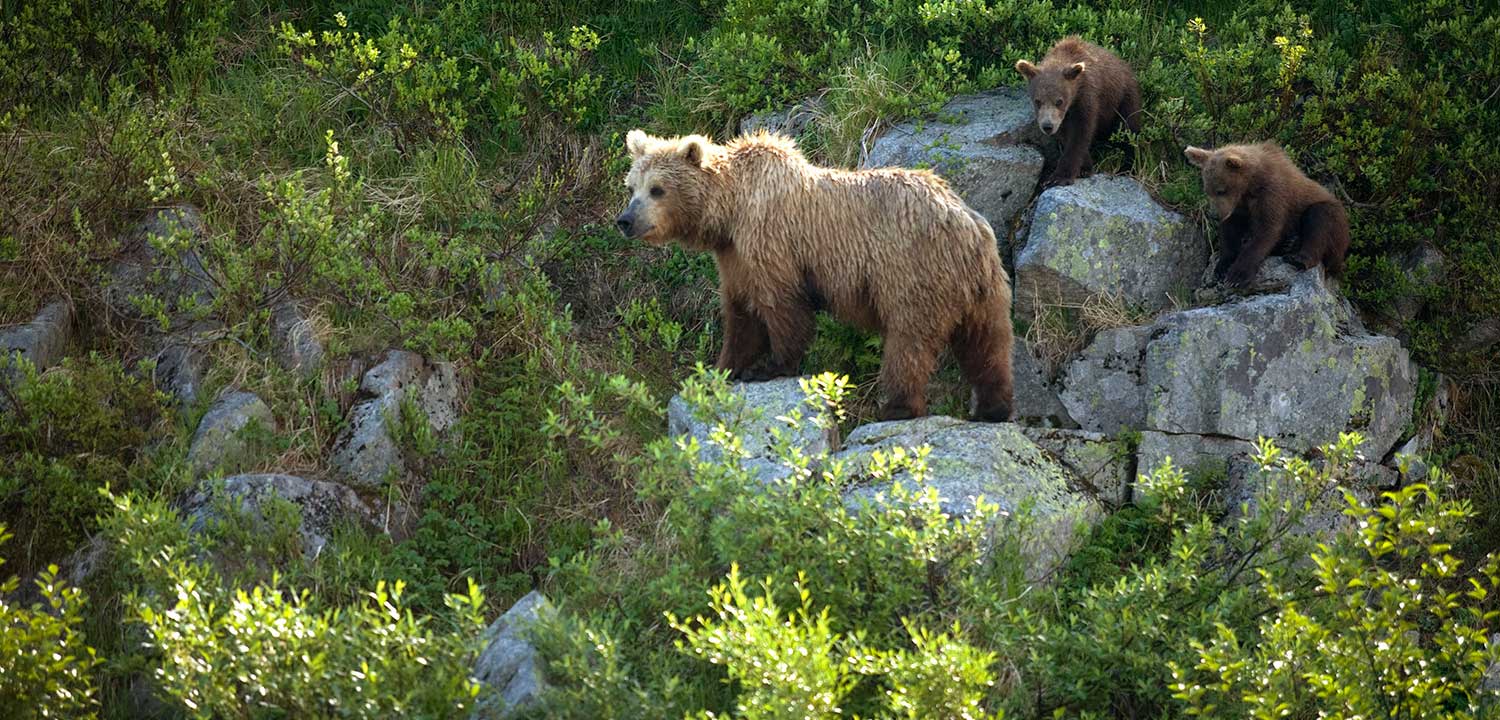
By Guido Rahr, President and CEO
In the summer of 1975, the great nonfiction writer John McPhee was dropped north of the Arctic Circle onto the Salmon River, with a canoe, two dubious folding kayaks, a few fishing rods and a handful of government land managers and biologists – all exploring an area that would later become a national park.
During a long Arctic afternoon, McPhee rambled up from the river with two of his companions into a thicket of blueberries, and there saw his first grizzly bear in the wild. A pulse of panic and fear gave way to the warmer realization of what the bear meant: “[The bear] was the predominant thing in that country,” McPhee writes in the classic Coming into the Country, “and for him to be in it meant that there had to be more country like it in every direction and more of the same kind of country all around that. He implied a world.”
I’ve been thinking more about that sort of place today, with 10 national monuments – including Oregon’s Cascade Siskiyou – in a state of flux, the Tongass National Forest potentially open to deeper exploitation, and – most concerning of all – Bristol Bay, Alaska under new threats from mining.

These inspiring, intact landscapes and more public tracts across the West are our sanctuaries. For hunters and anglers, they sustain us with food, solace, and beauty. They answer our most basic longings for the wild and provide a vital link to our primal past. They deepen our sense of place and belonging.
That’s why they are as important to our way of life as our everyday work. (For thousands of guides and recreation industry workers, these places are the work place.)
Once we lose them, they are gone. You can’t go mine for wild sockeye somewhere else. Sage grouse don’t grow on trees. We know deep down that the burden of proof should be on industry to prove why a unique natural treasure should be wrecked, not on the public to prove it shouldn’t.
Unfortunately, it is the other way around. Extractive economics always has the upper hand.
So we pick our battles. We have no blanket antipathy toward oil, mining, or big timber. There is a place for all these economies on the Western landscape, because families and communities depend on them.
We have worked to meet timber halfway on the Tillamook and Clatsop state forests in Oregon, pursuing a balance between logging and conservation in this center of salmon abundance in the Lower 48. We’ve worked alongside timber companies on the Washington Coast, helping to restore clearcut lands along the great stronghold rivers like the Hoh and the Quinault. And elsewhere around the Pacific Rim, we have partnered with oil companies to minimize their impact to salmon streams.
But there are certain centers of biological abundance that are worth more as intact ecosystems than industrial landscapes. There is no place for heavy mining in the headwaters of Bristol Bay. This is a biological reality. Contaminated streams and lakes in the upper watershed – even one – would be potentially catastrophic to sockeye runs that feed the whole ecosystem. There’s also an economic argument for wholeness. Once the sockeye start disappearing in droves, the commercial, sport and subsistence fishing economies that depend on them will quickly disappear as well. Systemic flips can happen fast. We have an entire 250-year history of lost salmon runs from Europe to the Pacific Northwest to demonstrate that.
As McPhee noted later in his tale, when an image of that Arctic bear returned to him before sleep: “It was a vision of a whole land, with an animal in it…To be there was to be incorporated, in however small a measure, into its substance…”
Without our last, whole landscapes surviving for our kids and grandkids to join, we’re a diminished nation, unworthy of our great history of conservation and wise use.
This season, we pledge all of ourselves to keeping this great land and its rivers whole.
